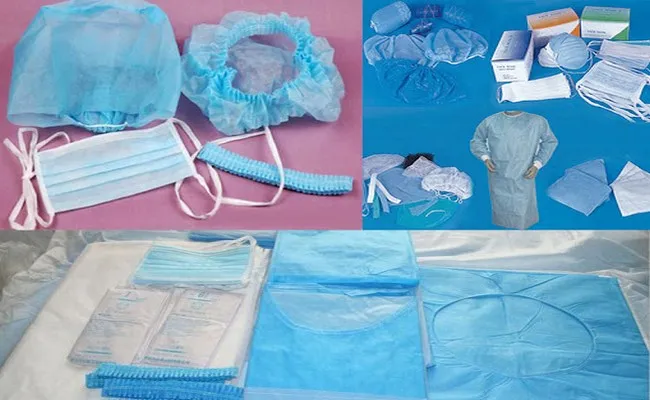Non-woven fabric has proven to be a critical component in the manufacturing of disposable ppes in hospitals. Non-woven materials are often used in medical settings due to their inherent properties, making them ideal for various healthcare applications. These properties include their ability to provide a protective barrier, their ease of sterilization, their resistance to tearing and punctures, and their absorbent qualities.

One significant benefit of non-woven fabric is that it is disposable and therefore helps to eliminate the transmission of bacteria and hazardous viruses in a hospital environment. Medical settings require the use of high-quality disposable products that have been sterilized and able to provide a barrier against the exchange of pathogens. Non-woven materials offer an effective solution for meeting these requirements, making it a popular choice in the manufacture of disposable products for medical use.
The non-woven fabric used in the hospital sector is typically made from synthetic fiber, which implies that their components have high consistency and uniformity. This characteristic is essential, particularly when it comes to the sterilization process. They have a high degree of structural stability that increases their effectiveness as a barrier. Non-woven fabric’s structure allows it to resist liquids from permeating through it, which is essential in protecting from dangerous biological agents.
Another advantage of non-woven fabrics in the medical sector is their absorbent qualities, making them an ideal material for use in dressings, bedding, and surgical gowns. The absorbent properties of non-woven fabric enable it to soak fluids, reducing the chance of infection or contamination in the surgical environment. This makes them an indispensable material for use in the healthcare sector, where reducing the risk of infection is a top priority.
Non-woven products are incredibly versatile and can be designed and produced to meet specific medical requirements. They can be made to suit different products, including masks, medical barrier gowns, cloths, and bedding among many others, all of which play a critical role in various healthcare applications. By customizing to meet specific requirements, non-woven fabrics provide high levels of hygiene and infection control, enhancing patient care and reducing the risk of infection.
Additionally, non-woven products are both cost-effective and environmentally friendly. The manufacturing process of non-woven materials is highly efficient, allowing mass production at a lower cost. Also, most non-woven fabrics are manufactured from recycled materials, making them an environmentally sound choice. The production process aims to reduce waste by using the least amount of materials to produce quality products for healthcare environments.
In conclusion, non-woven fabrics have revolutionized the medical industry, providing a highly effective and cost-effective solution to the production of disposable items in the healthcare sector, such as surgical gowns, drapes, and beddings. With their non-porous structure, they provide a strong barrier against fluids and protect against the exchange of pathogens. They are easily customizable to suit specific needs, hence providing a versatile solution for healthcare applications.
Furthermore, the absorbent properties of non-woven fabrics ensure that the surgical environment is kept clean and sterile, ensuring that patients are kept safe from the risk of infection. Their low cost, recyclability, and environmental impact are key drivers in the continued use of non-woven fabrics in the healthcare industry. Therefore, the relevance of non-woven products in the healthcare sector will continue to be a central factor in protecting patients, healthcare personnel, and the environment.


